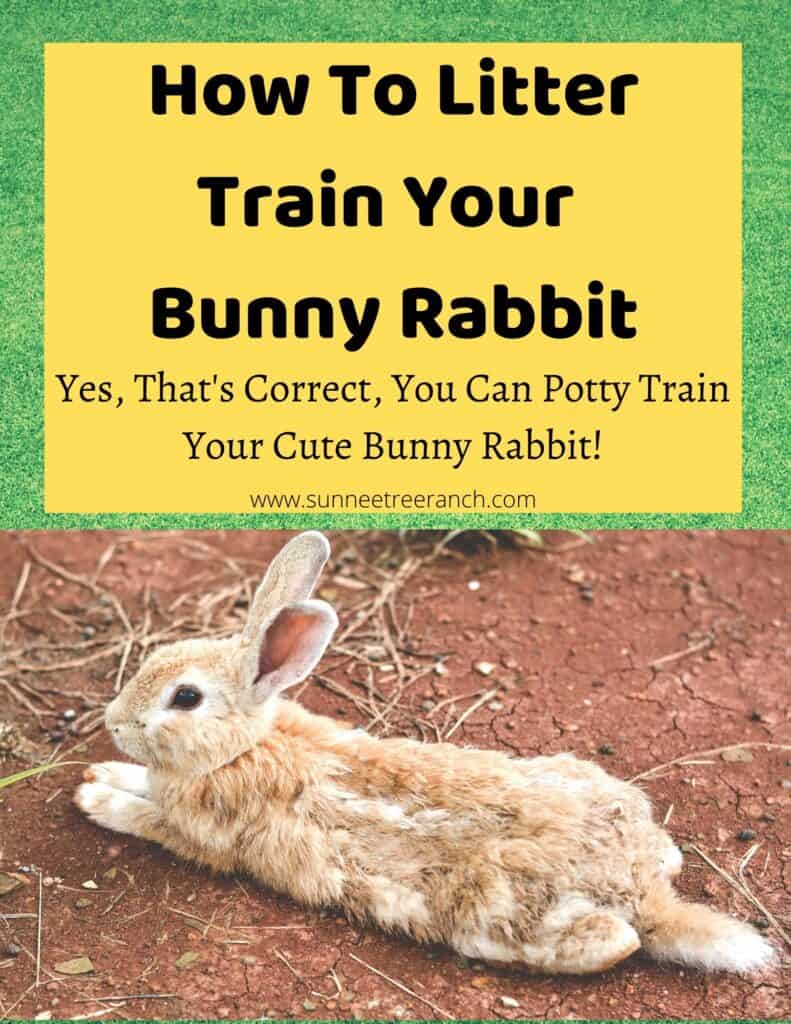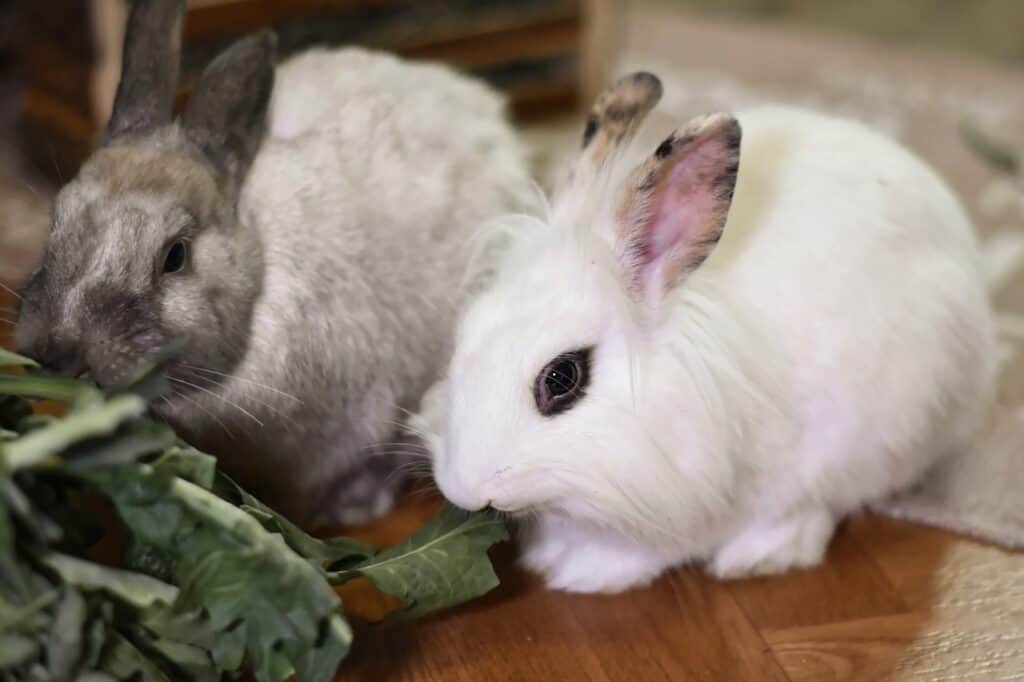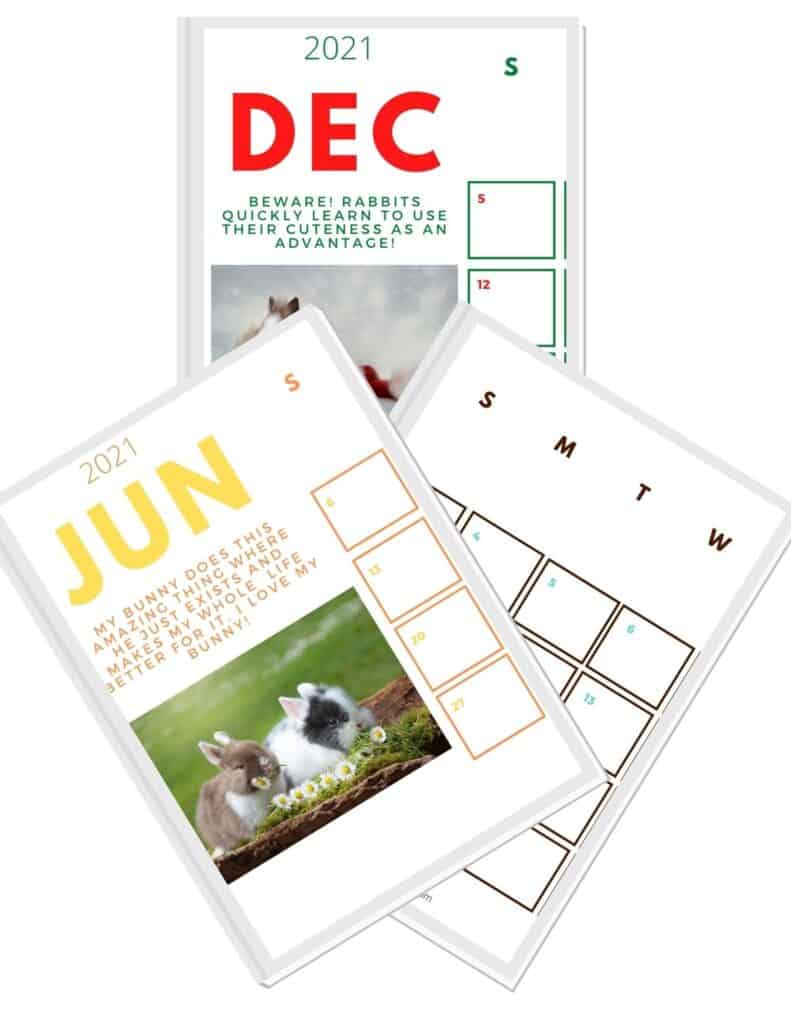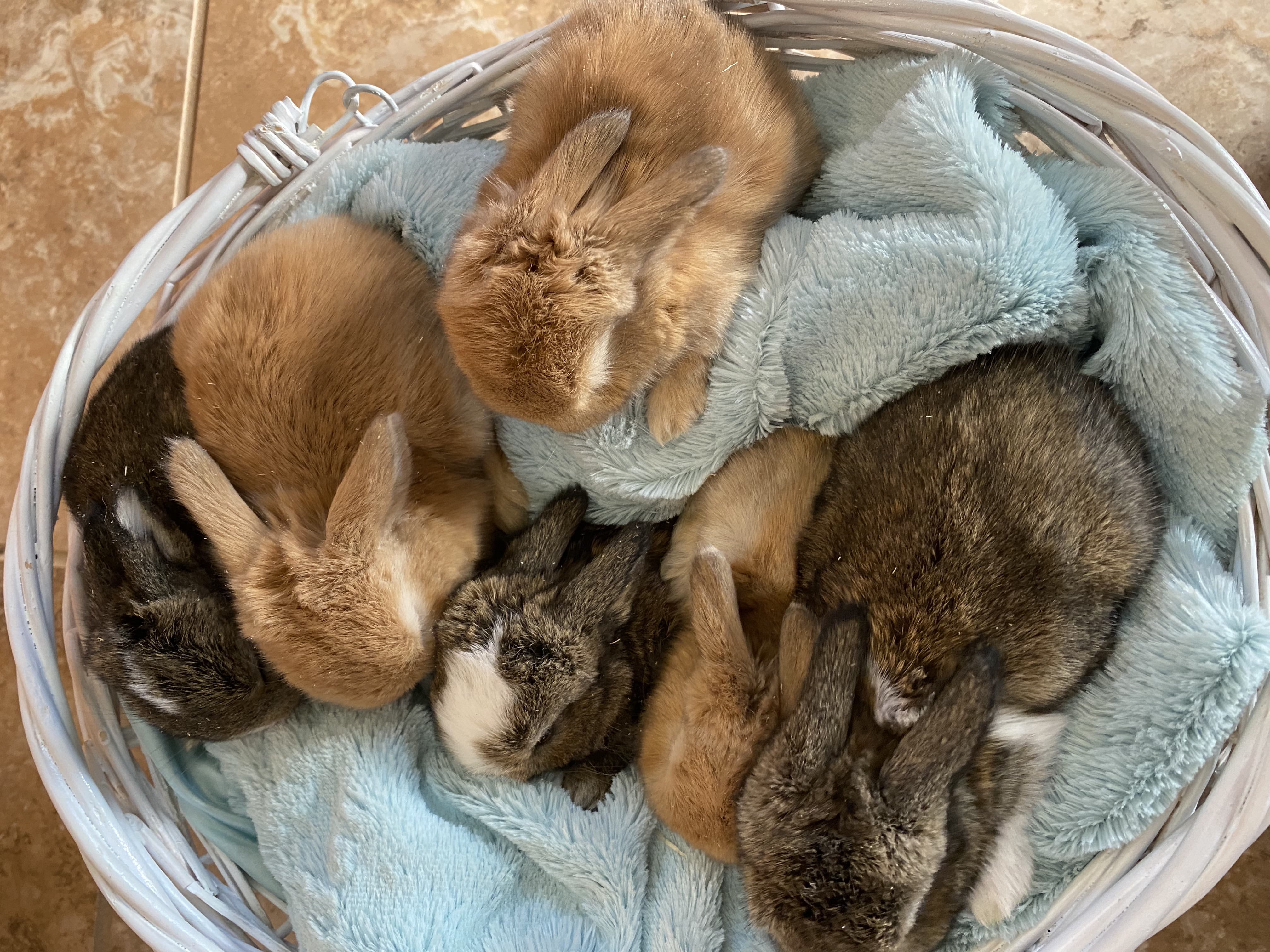Can you Really Potty Train A bunny to go in a litter box (Pee-Pads can be done too)?
- Yes, you absolutely can!
- It’s a pretty great day when your pet goes potty all by its self in it “bathroom“. It was only recently I learned they could even do this. So I had to share.
How do I begin?
Start with a litter box filled with the Following:
Be informed on Pine/Cedar/Aspen Shavings
Both pine and cedar are not recommended as suitable bedding, because they are connected with respiratory issues and liver damage in small animals. Unfortunately, they are still widely available, though. Aspen shavings are okay to use. The benefits of all three is that they are cheap, available in almost any grocery store, and absorbent. The disadvantages are that the shavings do very little to control the odor of urine and often stick to the rabbit’s fur only to be tracked all over the house. They quickly turn into a wet mess and need to be replaced often.
Paper-Based Bedding
Fresh News is as friendly to the environment as it is to your wallet. More absorbent than wood, clay, or corn litter and processed with baking soda for odor elimination, it’s an excellent alternative to traditional litter. Carefresh is the most known brand of bedding made from “all natural cellulose fibers”. It’s generally brown, but comes in other colors as well. It’s very absorbent, safe for small animals, controls odor well, and doesn’t stick to fur. Unfortunately, it is also rather expensive and only available in pet stores. There are cheaper knock-off brands available, for example Critter Care Natural at Amazon. We also like the National Geographic brand. Carefresh has recently changed their formula to include baking soda, which can be harmful to rabbits and smells bad, too. Hopefully, they will re-think their decision in the future.
Newspaper/Shredded Paper
Using newspaper or shredded paper in a rabbit’s litter box is a cheap option that works well for some people. If the rabbit eats the paper, blockage can occur which can be fatal and/or expensive to treat. Paper doesn’t control odors well and needs to be replaced frequently.
Yesterday’s News/Paper Pellets
Yesterday’s News is an all “natural, non-toxic, virtually dust-free, and highly absorbent, so they make great bedding material” for rabbits. The good thing is, it’s available in most grocery stores in the cat section. It can also be composted.
Wood Stove Pellets
Hardwood Stove Pellets that do not contain chemicals (such as accelerants that speed up the process of lighting them) are a safe option for rabbits. They are cheap, available in home improvement stores and grocery stores (especially during the winter months), and absorb odors and fluids well.
Cutest 2021 Bunny Calendar with all the todo’s for sweet bunny throughout the year!
Pee – Pads
Many pads contain an ‘attractant’ designed to encourage puppies to use them, and these are not suitable for rabbits. BUT Look for ones suitable for adults or that are more specifically designed for incontinent animals that do not contain any added fragrances
DONT GET – Cat Litter/Clumping Litter
Cat Litter is not recommended for rabbits. If ingested, it clumps up inside the digestive system and can be fatal. Also, it smells terrible anyway (but maybe that’s just our personal opinion).
Don’t Get Corn Cob Litter
While corn cob litter absorbs urine well enough, it is small, lightweight, and will be tracked all over the house. Having small, hard pieces of corn everywhere has turned us against it pretty much immediately. Also, some vets recommend not to use this kind of litter, because it may cause blockage when ingested.
Don’t Get Clay Litter
Clay litter is not recommended for rabbits. It’s very dusty and can cause respiratory issues. Ingesting it could also be fatal..
Click here or the darling pic above to see our available kits
Then leave some rabbit poops in the litter box for your rabbits to realize it’s their toilet.
- This will help them to know this is where they will be going potty, to heal register this is their “special spot” to go tinkle.
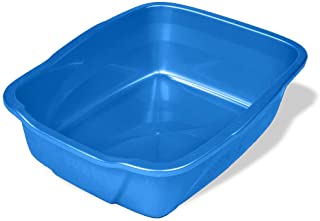
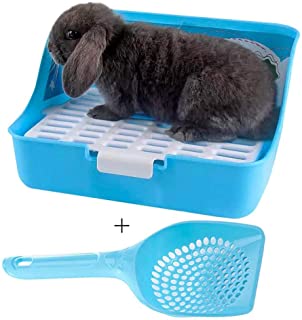
Next place the litter box where your rabbits prefer to go for pooping and urinating.
- Start with a box in the cage, and one or more boxes in the rabbit’s running space. If she urinates in a corner of the cage not containing the box, move the box to that corner until she gets it right. Don’t be concerned if your bunny curls up in his litterbox–this is natural. Once she’s using the box in the cage, open her door and allow her into her running space. Watch her go in and out on her own. If she heads to a corner where there’s no box, or lifts up her tail in the characteristic fashion, cry “no” in a single, sharp burst of sound. Gently herd her back to her cage and her litterbox, or into one of the boxes in her room. Be careful, however. You don’t want to make the cage or the litterbox seem like punishment. A handful of hay in the box makes it a more welcoming place.
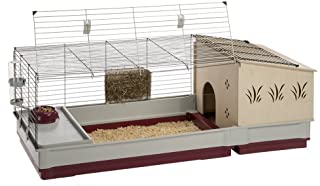
- After she first uses the box, praise her and give her her favorite treat. Once she uses the box in her room a couple of times, you’re well on your way, as her habits will be on their way to forming. As she gets better trained in her first room, you can increase her space. Don’t hurry this process. And if the area becomes very big, or includes a second floor, be sure to include more litterboxes, so as not to confuse her. Remember, as she becomes more confident and uses fewer boxes, you can start to remove some of her early, “training” boxes. Get your rabbit into a daily routine and try not to vary it. Rabbits are very habitual and once a routine is established, they usually prefer to stick with it..
How many litterboxes?
- The more, the merrier, especially if your rabbit is a bit of a slow learner, or is especially obstinate about where she wants her box(es) to go. As her habits improve, you can decrease the number of litterboxes.
What kinds of cages work best?
- Use a cage large enough to contain a litter box (along with bunny’s food and water bows, toys, etc.) and still allow enough room for the rabbit to stretch out. Place the box in the corner of the cage that he goes in. With a litter box in the cage, when the rabbit is confined to his cage when you’re not home, cage time is learning time.
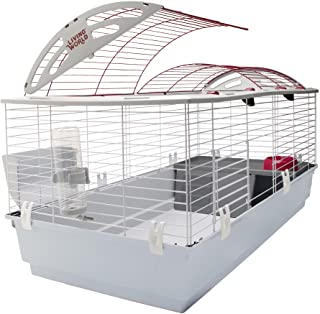
Cleaning and disposal
- lean litterboxes often, to encourage your rabbit to use them. Use white vinegar to rinse boxes out–for tough stains, let pans soak. Accidents outside of the cage can be cleaned up with white vinegar or club soda. If the urine has already dried, you can try products like “Nature’s Miracle” to remove the stain and odor. I LOVE THIS STUFF!!! To dispose of organic litters, they can be used as mulch, or can be composted. Rabbit pills can be directly applied to plants as fertilizer.
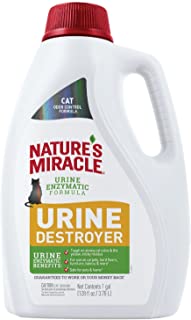
How to litter train a bunny and keep your house clean?
Training your bunnies are all about giving them the time to build their new habit. You as the guardian have to assist them as well to build the habit. How can you teach them good manners? You have to limit your bunnies running space or restrict them in a smaller space from the beginning to litter train the.
The restricted zone can be a room in your house, or a playpen or even a hutch. Within the restricted space put a litter box in a corner.Or maybe two litter boxes in two corners as your desire. Do you know why I said to place the litter box/potty in the corners? Because rabbits usually consider the corners as their toilet.
Next, Observe your rabbit how s/he behaves within the constrained room or the playpen and where s/he goes to the toilet.If your rabbit uses the litter box, then it is great that she is already getting used to with the litter training and adapting to a new habit. However, if your rabbits don’t go anywhere near the potty and use any other corner of your room as his/her toilet, you have to deal with that.Some stubborn rabbit really does not like to build new habits
Once you are satisfied with your rabbits’ behavior that he/she has learned to use the potty as required, you can slowly increase your rabbits’ territory. Expand the area she is restricted to. But there’s a catch: Do not rush to expand you rabbits territory to the full house, that will overwhelm your rabbits and then s/he will break out of the habit of using the potty/litter box and start pooping and urinating anywhere she finds it comfortable. Hence it is very important to slowly expand a bunnies territory. Using a rabbit pen is extremely helpful in situations like these
- This blog post contains affiliate links. At no addition cost to you, if you click on a link and purchase something, I will receive a small commission.
Pills vs. urine
- All rabbits will drop pills around their cages to mark it as their own. This is not failure to be litter-trained. It is very important for your rabbit to identify the cage as her property so that when she leaves the cage for the bigger world of your house, she will distinguish the family’s area from her own and avoid marking it. To encourage this, make the rabbit the king of his cage. Try not to force him in or out of it– coax him. Do not do things to his cage that he doesn’t like, or things to him that he doesn’t like while he’s in the cage.
The trick to getting the rabbit to keep his pills in the cage is to give him ownership of his cage–respect the cage as HIS:
- Don’t reach into the cage to take him out; open the door and let him come out if and when HE wants to come;
- Don’t catch him and put him back in the cage or it will be his prison, not his home. Herd him back gently, and let him choose to go in to get away from you (I walk behind my buns, clap my hands, and say “bedtime.” They know that I’ll not stop harassing them with this until they go into their cage, so they run in except when they feel they haven’t gotten their fair share of time outside the cage.)
- It’s a bit like a child going home and closing the door, because someone is calling her names. They may make the playground an unpleasant place for her, but they can’t bother her in her own home.
- If the rabbit has been snuggling with you, it’s okay to carry him to the door of the cage and let him go in–just don’t put him directly into the cage, and never chase and trap him and put him in the cage.
- Don’t reach into the cage to get food dishes–anchor them near the door of the cage so they can be filled with a minimum of trespassing into the cage, or wait until the rabbit is out to fill them.
- Don’t clean the cage while the rabbit is in it–wait until he comes out. He’ll come over and supervise you, even help you move things around that you’ve set down outside the cage, but as long as he isn’t in the cage, he won’t see your cleaning as an invasion of his territory. (Smart rabbits–I wouldn’t object if someone were cleaning my house, either… 🙂 )
The same technique can be used if a rabbit doesn’t live in a cage, but in a particular part of a room. Mark the territory with a rug, tape, whatever, and don’t trespass over that.
The Last Thing You Need to Know about a Bunny is How long does it take to potty train a bunny???
- Litter training a rabbit doesn’t take very long. Potty training a rabbit may take up to one week or more. But in some cases, it is difficult to teach a stubborn rabbit. For some rabbits, it might take a lot longer to train them on how to use a potty. Just like any other animal. Some are quick to learn some aren’t. Its all about consistency on your end!
- Good Luck and we wish you the best!

